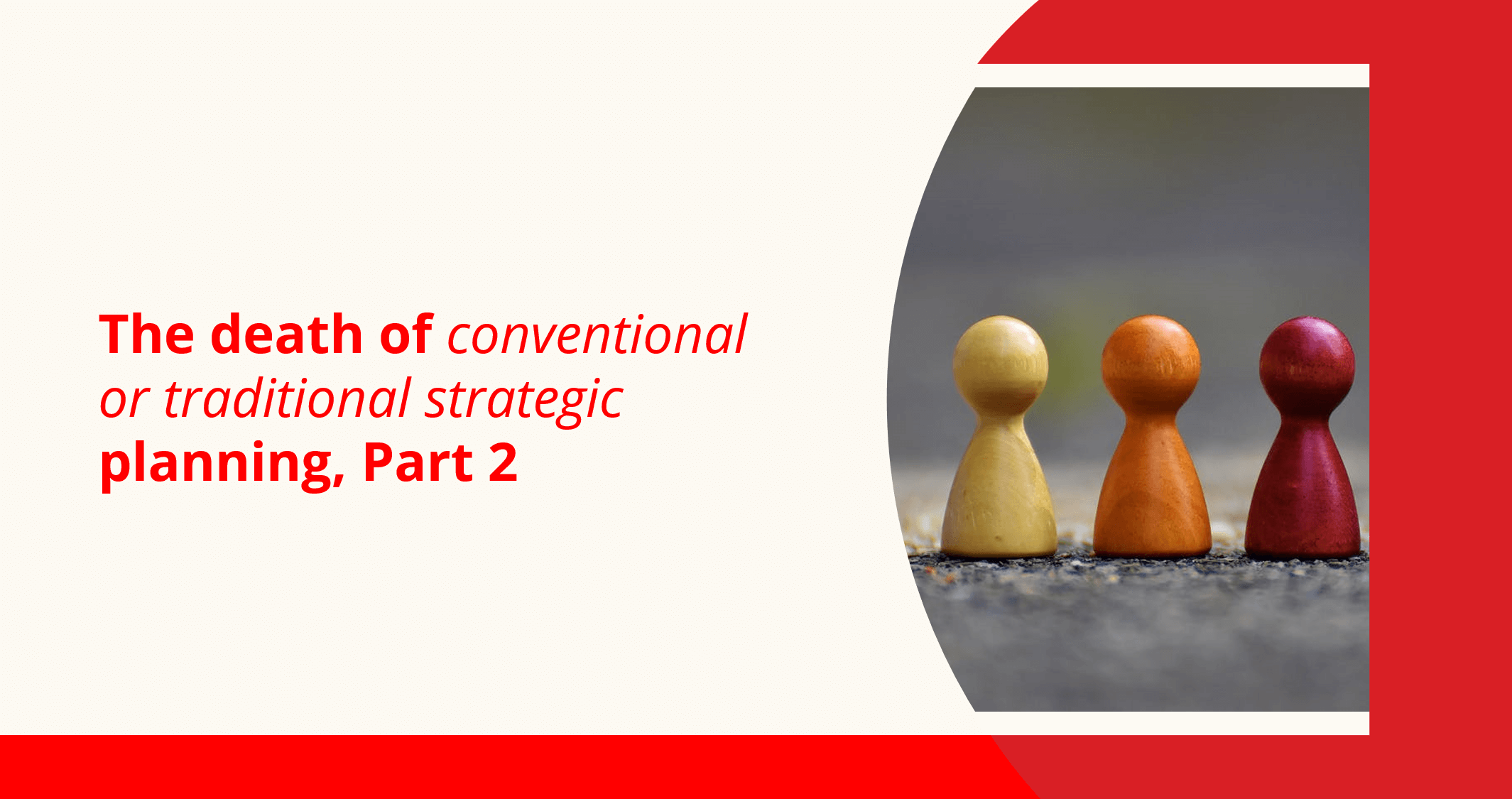What is strategy?
The strategy is the process of making choices about how to win with stakeholders and customers against the competition.
Read: The death of conventional or traditional strategic planning, part 1
Every person and company need a strategy – they specific way to win.
At an individual level, you can strategize to win by becoming a content expert or a professional – medical doctor, engineer, lawyer or accountant, or process expert – a consultant, a mentor, or speaker. Nowadays, politicking is a profession, you could decide to become one and win. Even better, you may shortcut the process by deciding to marry into a rich family, why not, if they can look after your needs and you don’t mind accepting ‘control’. Remember, you must develop a strategy that provides sustainable winning.
You may become rich by marrying into a rich family. But what happens when you are divorced in case you did not have a favorable pre-marriage agreement?
Traditional planning processes cannot survive in modern times because of the following:
Highly predictable. Not ideal for market leaders or game-changers
The conventional planning process is anchored on the current vision, mission, values, goals, and objectives after which the SWOT – strengths, weaknesses (internal analysis) and opportunities, threats (external analysis) of the company, or entity is done. Many companies publish such information on their company’s websites and in several public reports. In a highly competitive environment, a competitor could predict the company’s strategy by more than 60% of the time since the input data is available! As part of the competitor intelligence, one can know your vision, mission, goals, and objectives – from the annual reports – including your internal analysis like the 6 Ms – money, machinery, markets, materials, makeup, and manpower. If the company has any of these, it is considered a strength. If the resource is absent, it is assessed as a weakness. Given the rate at which staff leaves one company for another, it is so easy to know whether a particular competitor has money or not, the right machinery or not, or great people or not – in which case you know their internal capabilities.
Note that many companies that use the conventional processes and win, anyway, is because the benefit from government subsidies, taxpayer’s money, annual contributions, etc. rather than from innovation and great leadership. That is for a fact. A company like Google operating in a dynamic and highly competitive market cannot win with the traditional planning process – it is just too basic and predictable for them to win.
Mile wide, inch deep analysis
In the traditional planning processes, leaders spend a lot of their time in lots of analysis of the external factors without consideration of how they affect the business model and new ways of winning.
Look at a typical company’s strategic plan. There is hardly any difference from a research paper. You will see lots of PESTLED – analysis – where the micro-and macroeconomy analysis has been made, but zero application to how such information aids strategic choices. There is a lot of disconnect between the analysis and business model.
We call this a mile wide, inch deep.
You want a strategic planning process that takes stock of the conditions within the company: what is the company’s strategic challenges affecting growth.
Let us take a simple example of a person who receives two different kinds of news. In envelope one, the person gets admission to their dream university says Makerere University or Harvard. And in envelop two, there is news that following their recent medical examination, they have a life-threatening disease.
So, in one envelop, it brings good news of an opportunity. On the other, it is a personal weakness – health. As you can see, such a person cannot continue to pursue the opportunity anyway, without first confronting the weakness! This is a more practical way of looking at strategy.
Do I focus on the opportunity and stay blind to the threats and weaknesses? This is why winning companies start by asking the right strategic questions: what our biggest strategic challenge is. The better the question, the better the answer. Unfortunately, conventional planning does not encourage questioning.
To be continued in part 3.
Copyright Mustapha B Mugisa, 2020. All rights reserved.









